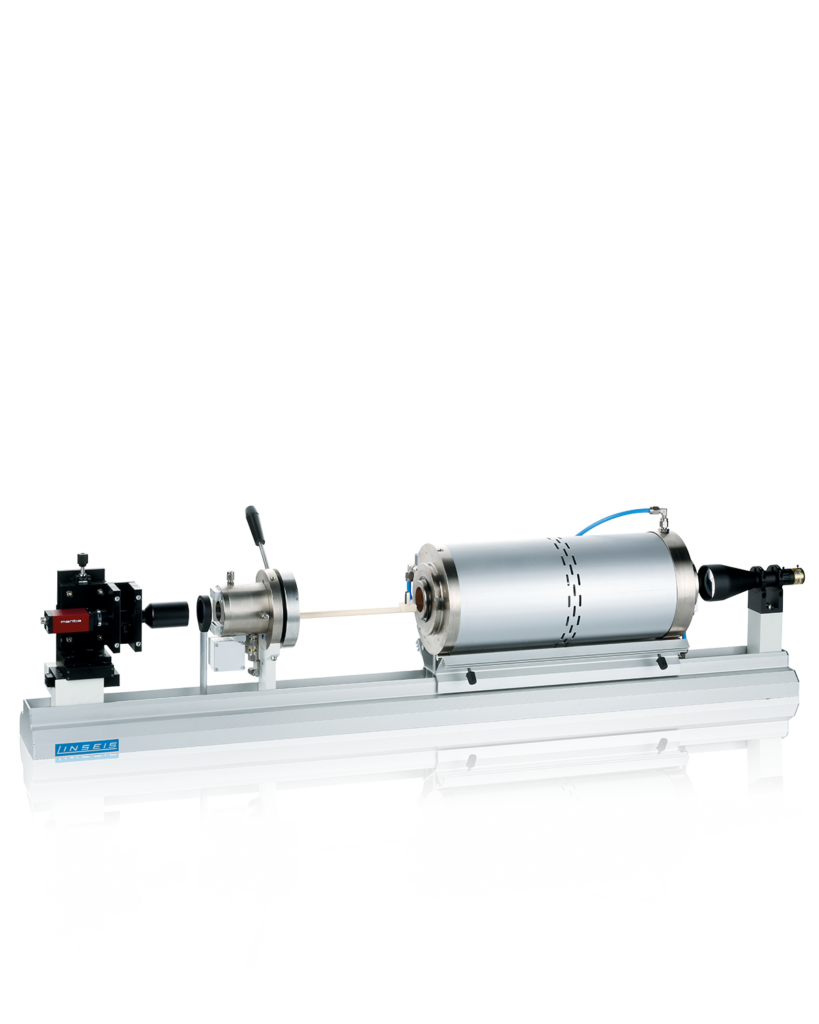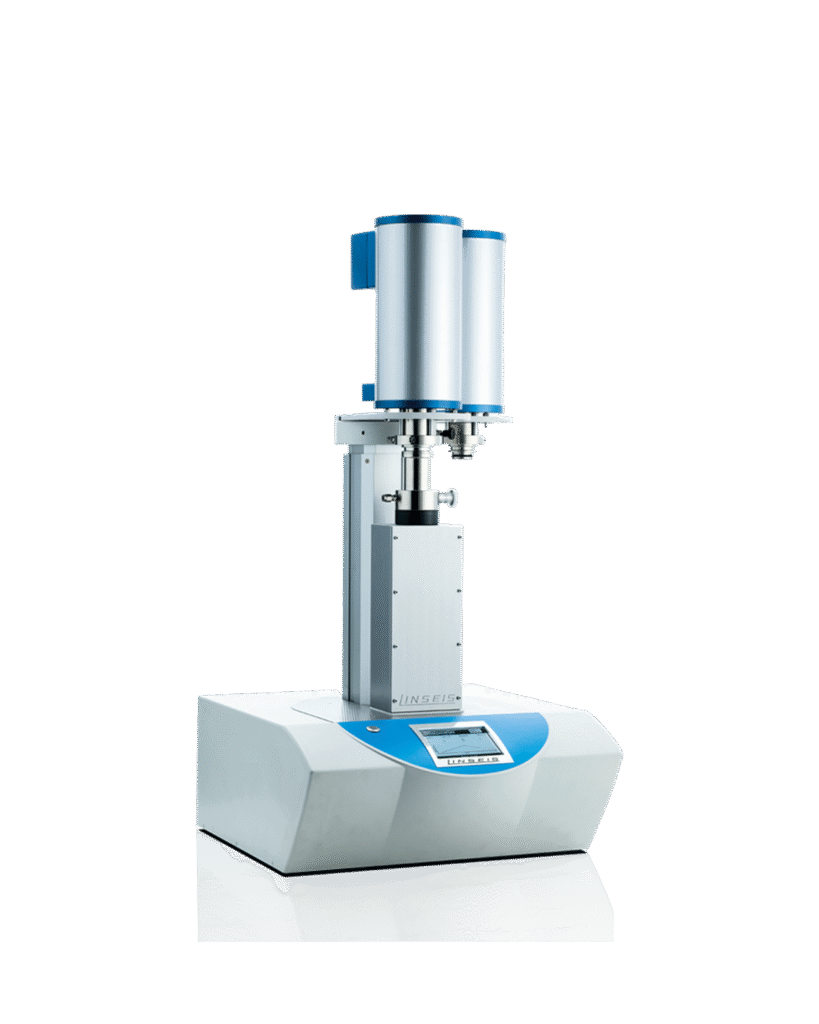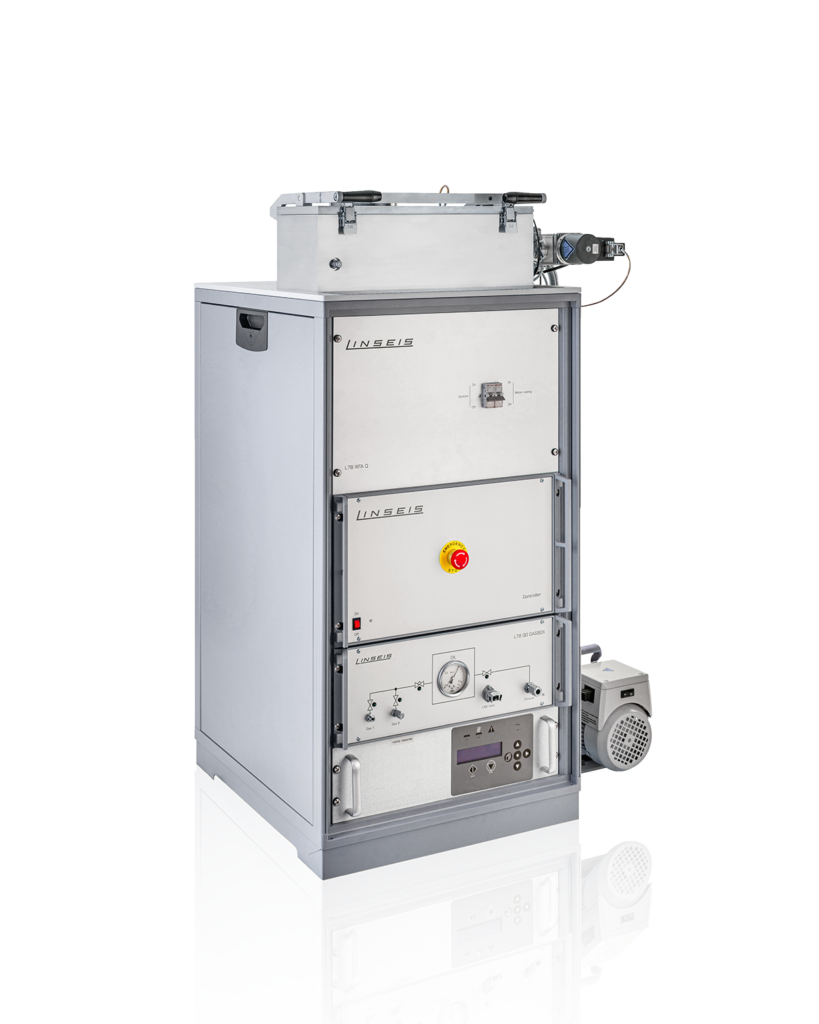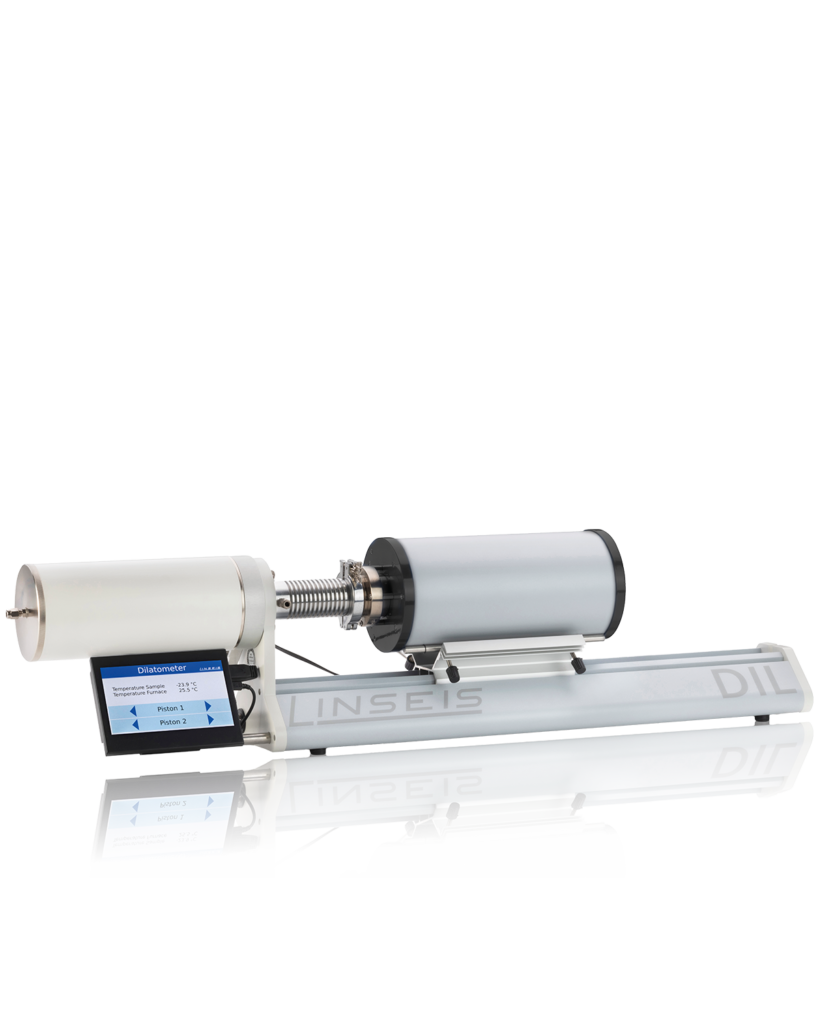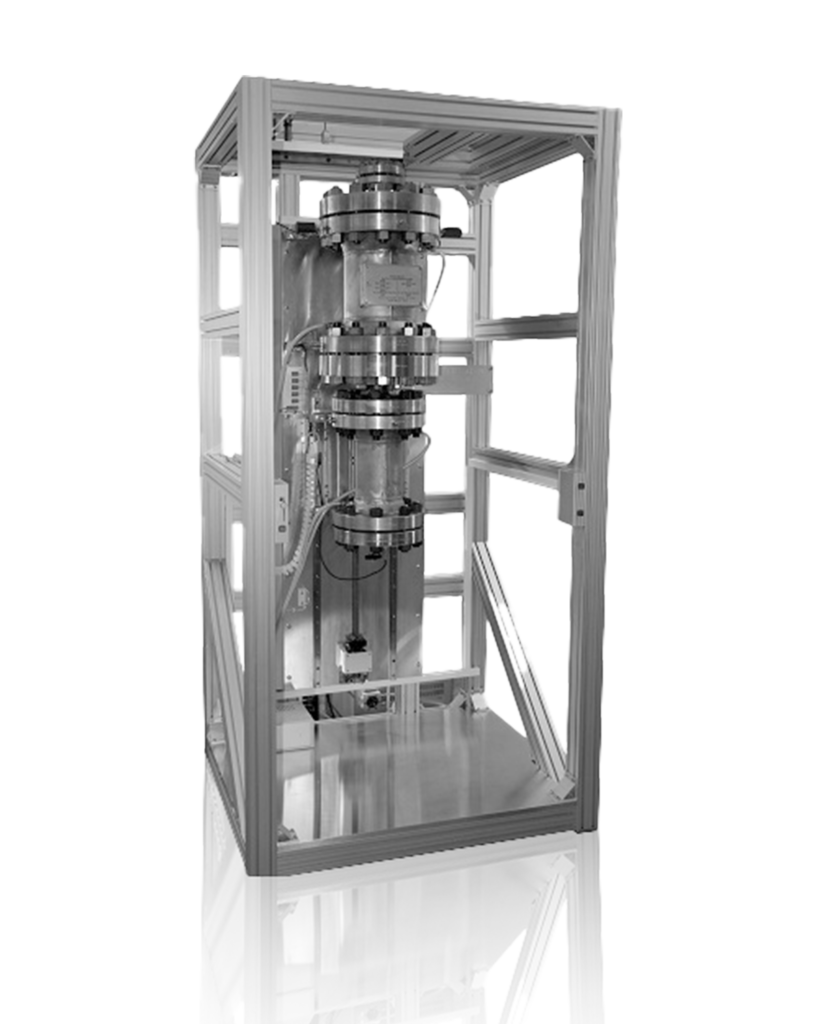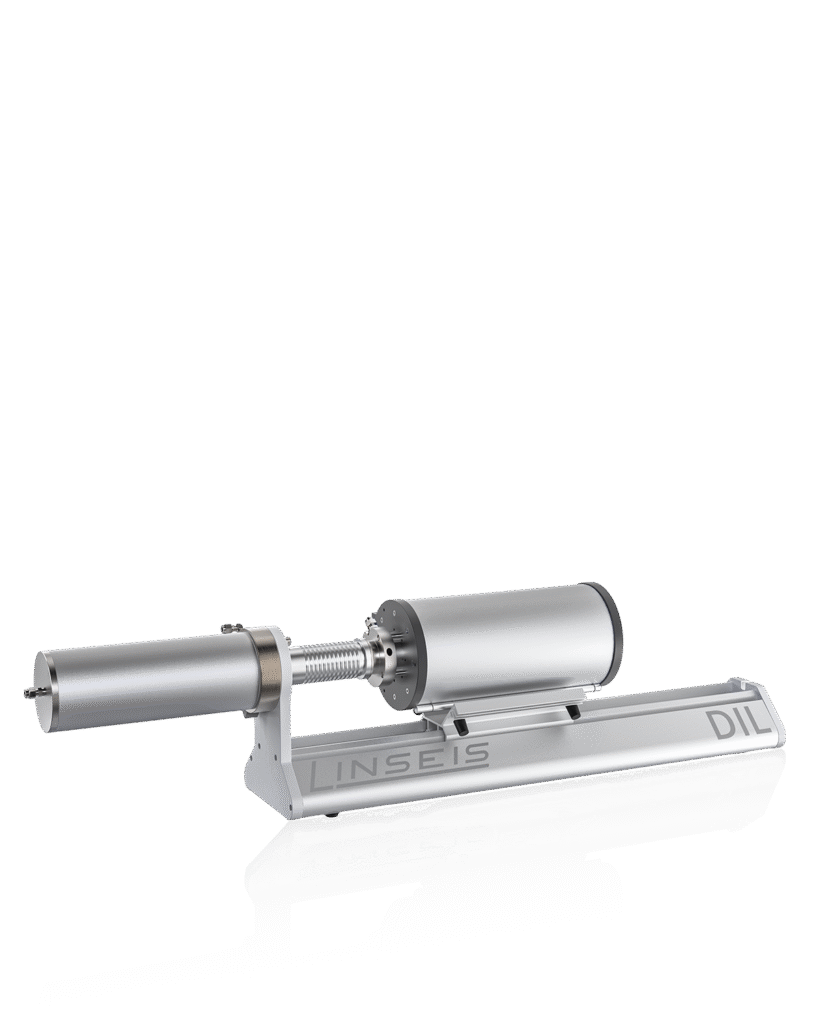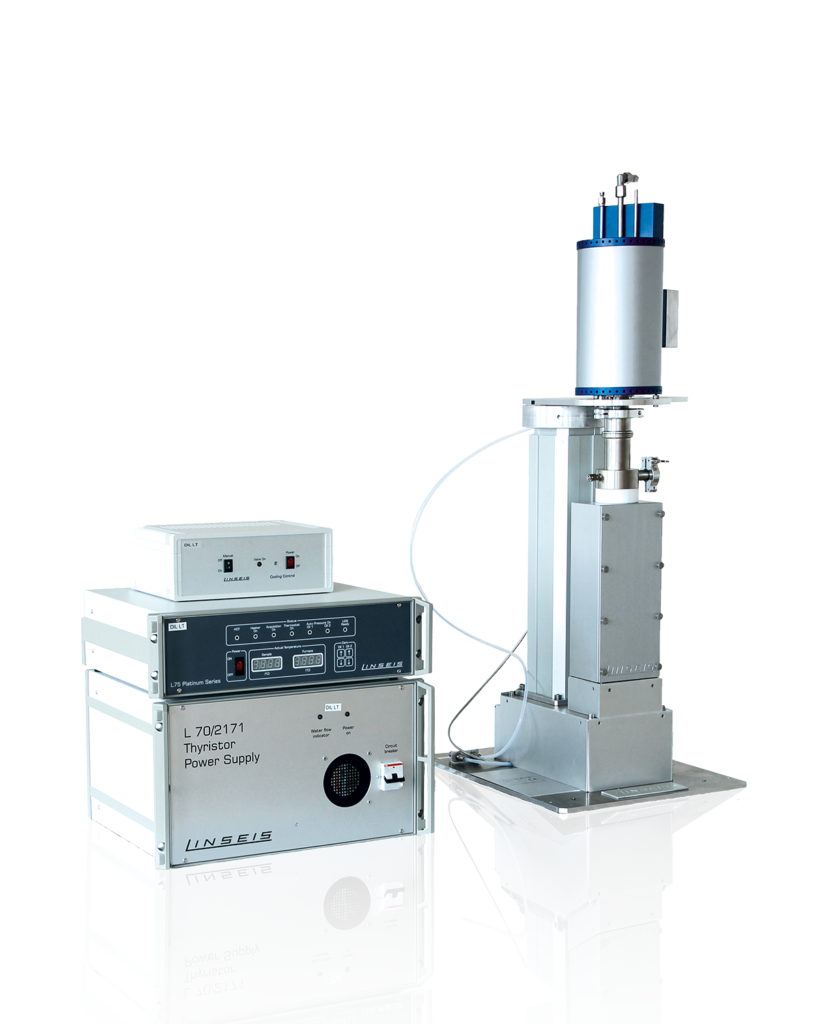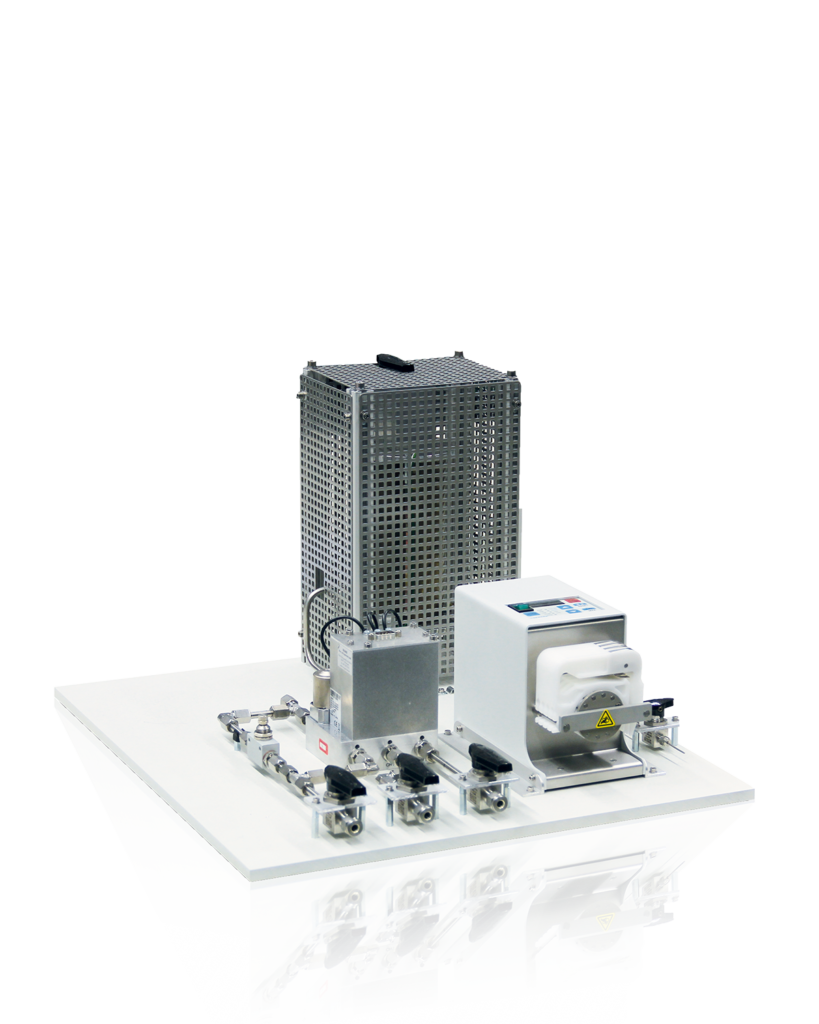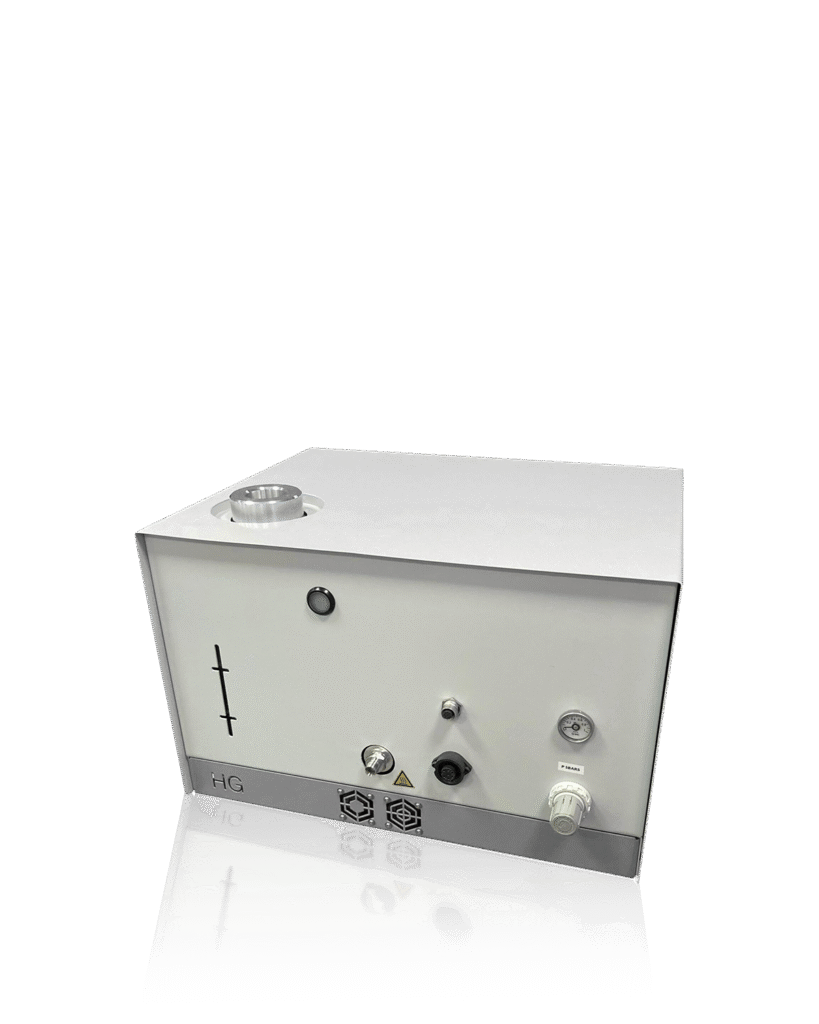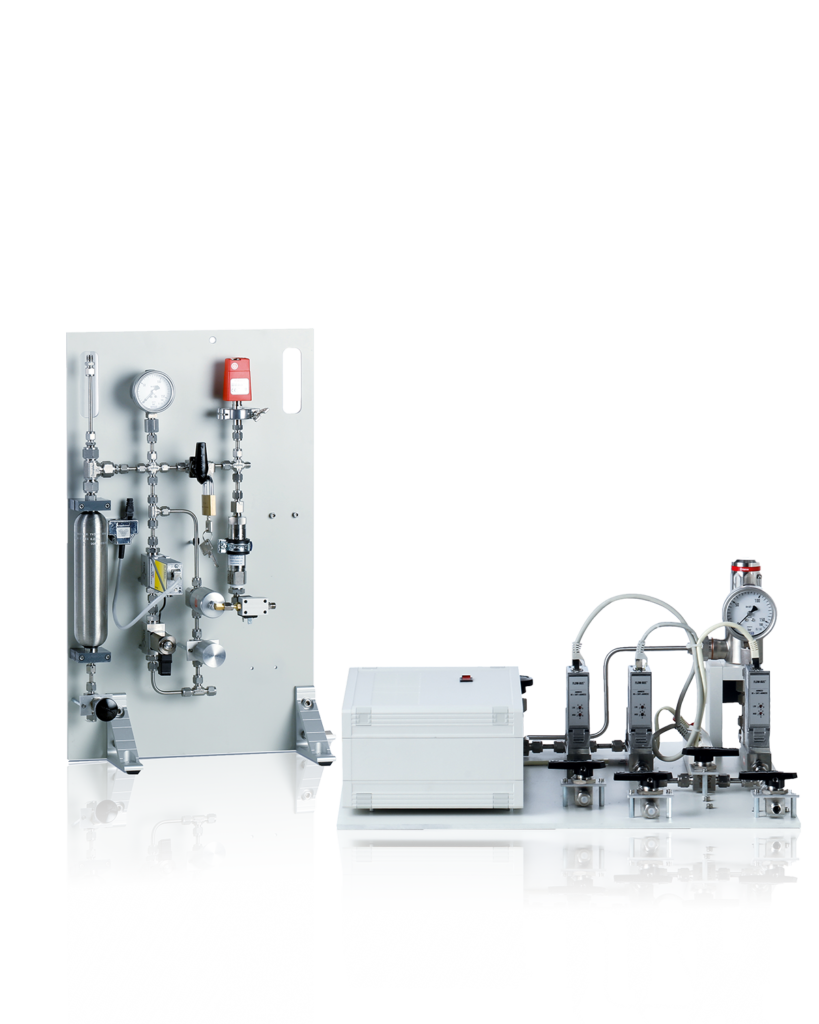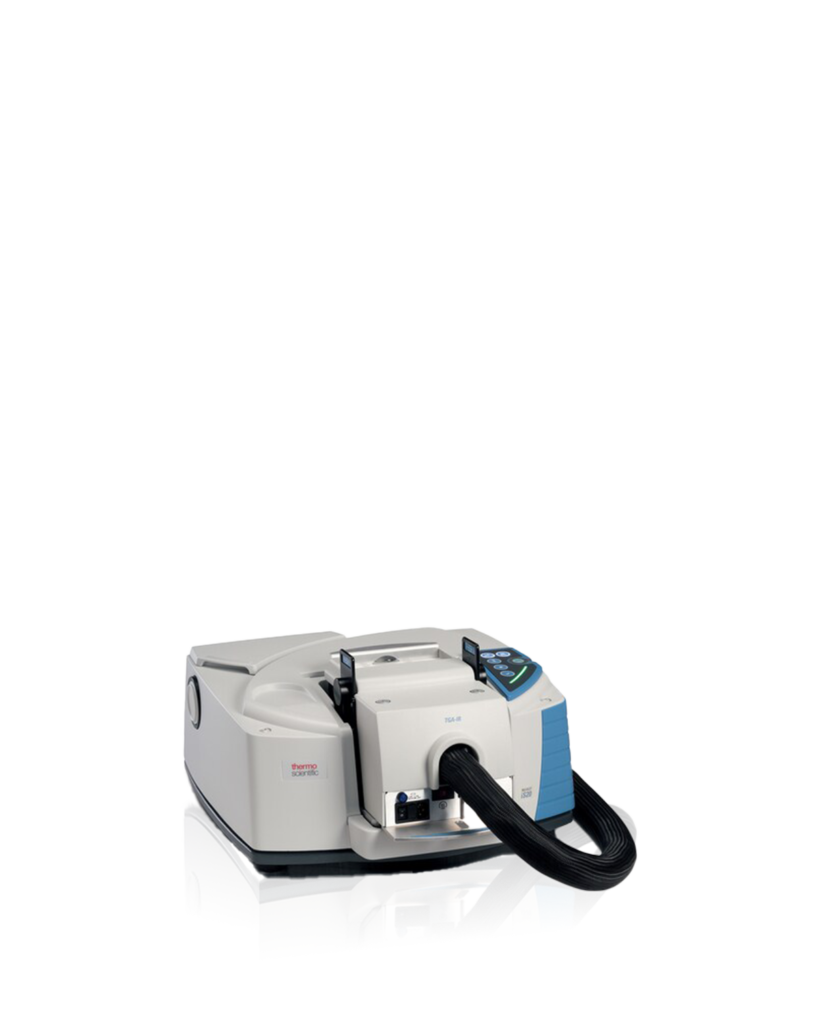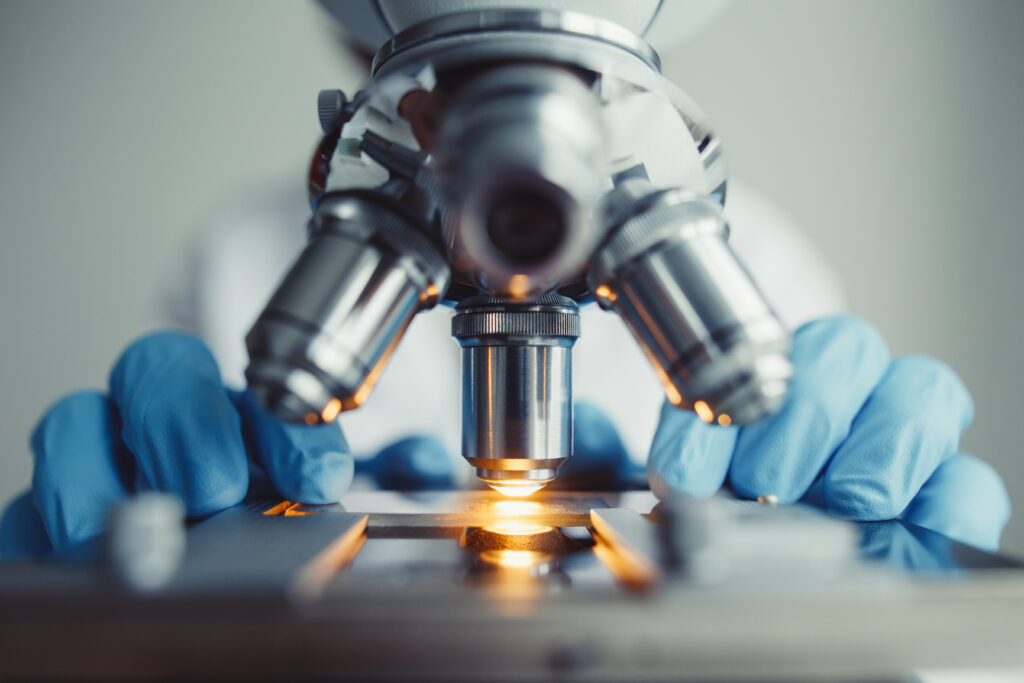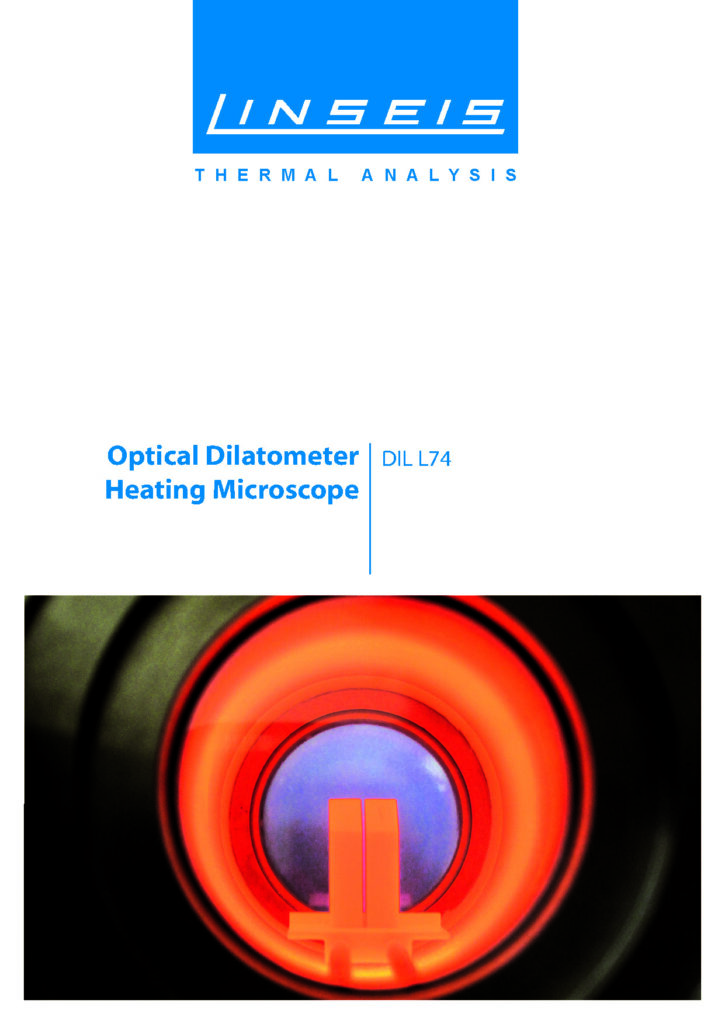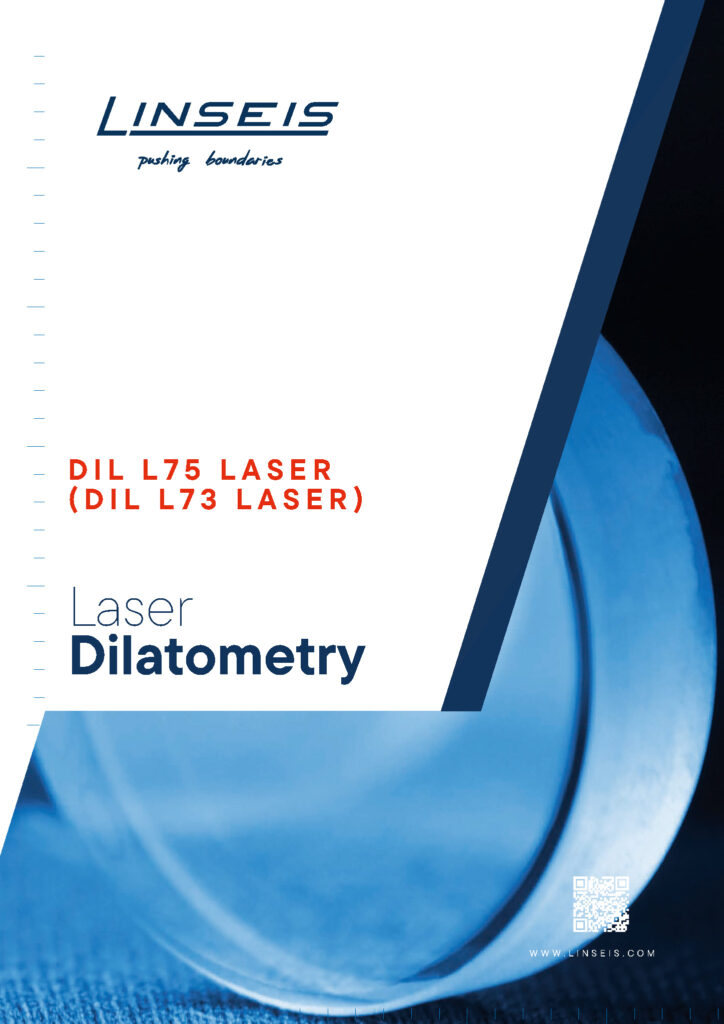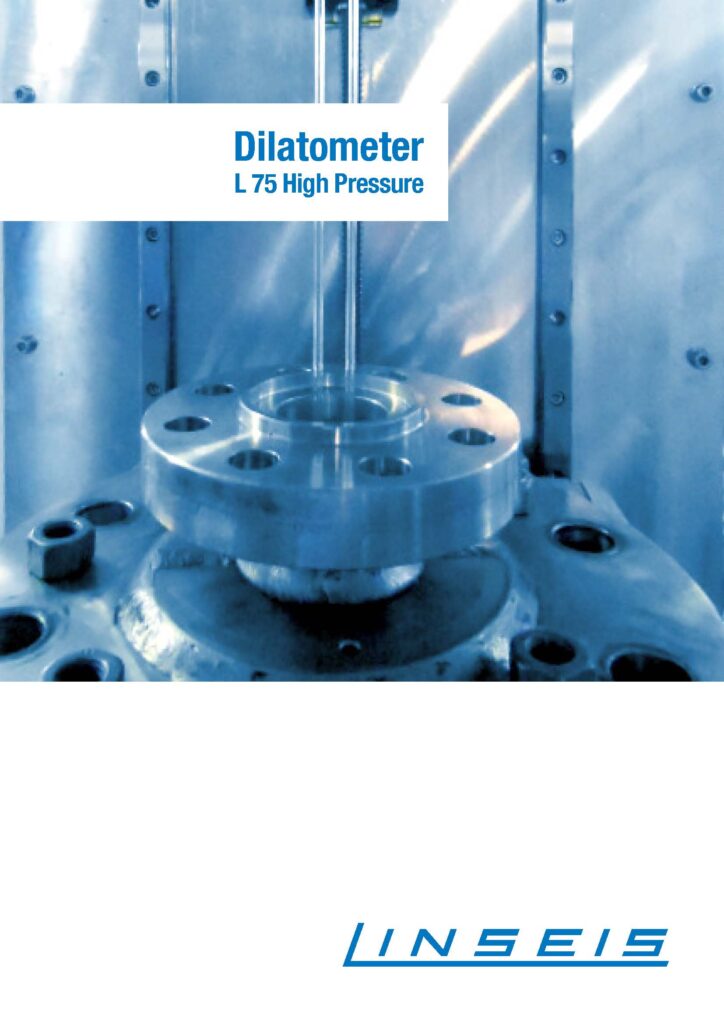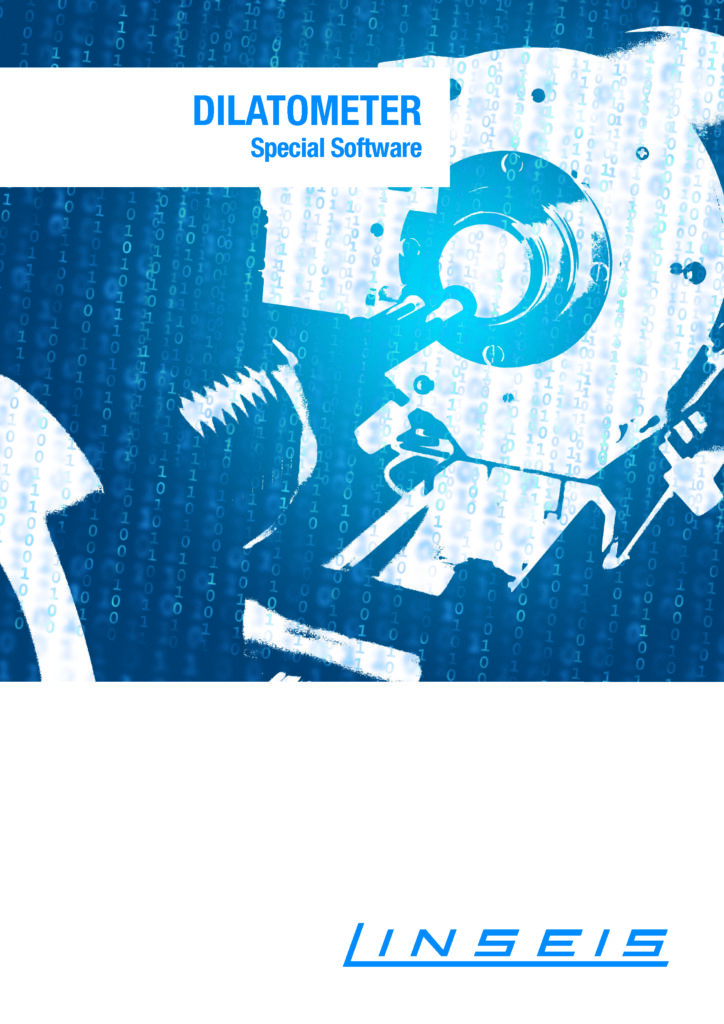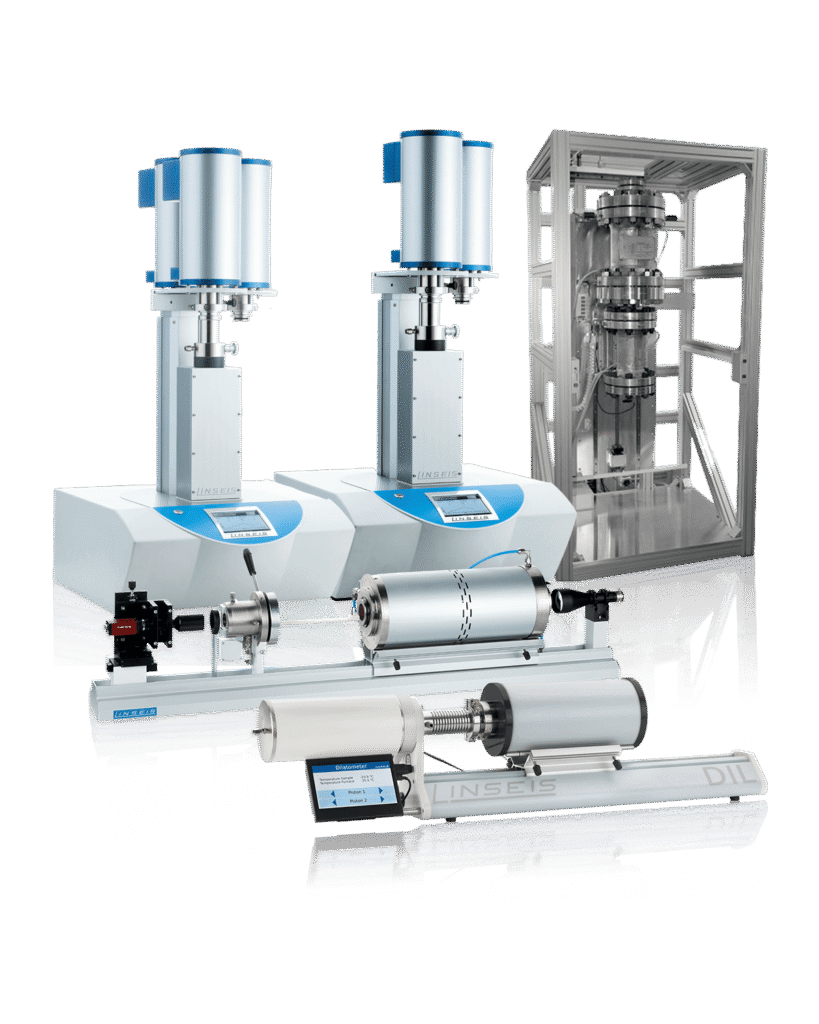
Dilatometer
Dilatometer (DIL) - Precise measurement of the thermal expansion of materials
Dilatometers enable the exact determination of the thermal linear expansion of solids, powders or samples under defined temperature conditions. Through the precise detection of changes in length can be phase transitions, sintering processes and other thermal material properties can be reliably analyzed – a decisive factor for research, quality control and material development.
Since 1957 we have been developing and manufacturing dilatometers for a wide range of requirements: from compact laboratory devices to high-temperature systems for research facilities and industrial applications. Whether metallic materials, ceramics, glasses, polymers or composite materials – the right solution is available for every industry, every temperature range and every application.
In our brochures you will find an overview of all models. We will also be happy to advise you individually to find the optimum system for your measuring tasks.
Our devices comply with international standards such as ASTM D696, ASTM E2550, ASTM E228, ASTM E831, ASTM E1131, ASTM D3175, ASTM D3850, ASTM D6370, ASTM D6375, ISO/DIS 9924, ISO 11358, DIN EN ISO 11359 and guarantee reproducible, standard-compliant results.
Our top dilatometers for maximum precision
All dilatometers at a glance
DIL L74 HM
The dilatometry is one of the most important methods for determining the thermal linear expansion of materials. It provides basic information on phase transitions, sintering processes, glass transition temperatures and structural changes under the influence of temperature.
Since 1957 Linseis has been developing and producing one of the most comprehensive series of dilatometers (DIL) worldwide. The systems enable high-precision and automated change in length measurements of solids, powders, pastes and liquids in the temperature range from -263 °C to 2800 °C.
Measured variables and applications:
- Determination of the coefficient of thermal expansion (CTE)
- Linear thermal expansion (ΔL)
- Sintering temperatures and sintering stages
- Determination of the glass transition (Tg)
- Phase transitions
- Optimization of firing processes
- Volume changes
- Rate-controlled sintering (RCS)
- Decomposition
- Density change
ā – mean expansion coefficient
L₀ – initial sample length
ΔL – change in length
ΔT – change in temperature
Calculation of the thermal expansion coefficient
The result of a dilatometer measurement is the temperature- and time-dependent change in length of a sample.
The average expansion coefficient (ā) describes how much a material expands or contracts with a certain temperature change.
It is calculated from the ratio of the relative change in length to the change in temperature and is calculated using the following equation:
The measurement is carried out by inserting a rod-shaped sample into the sample holder and connecting it to the length measuring system via the feeler plunger.
During the defined heating or cooling rates, the system records the change in sample length precisely and continuously.
This makes it possible to measure thermal expansion, phase transitions, glass transition temperatures and sintering processes can be reliably analyzed. reliably analyzed.
Dilatometer variants and design principles
Horizontal alignment
Horizontal dilatometers are characterized by a simple, robust design and an attractive price-performance ratio.
They are the ideal choice for the medium temperature range and enable convenient sample handling and quick sample changes.
In addition, tailor-made systems for larger samples can be implemented to cover special applications or unusual geometries.
Vertical alignment
Vertically aligned dilatometers work according to the zero-friction principle, in which the sample is in contact only with the end stop and the push rod – for maximum measuring precision without mechanical friction losses.
Depending on the configuration, up to three furnaces can be integrated to cover the entire temperature range from -180 °C to 2800 °C. This makes vertical systems suitable for both low and extremely high temperatures.
Another advantage is the increased sample throughput:
A hot oven can be started up automatically while a cold oven is already ready for the next measurement – this significantly speeds up the changeover process.
The orientation of the oven can be adjusted depending on the application:
At low temperatures, the stove is located at the bottom (measuring compartment at the top) to ensure optimum gas access, as cold air falls downwards.
At high temperatures, the oven is positioned at the top (measuring chamber at the bottom) so that hot air flows upwards and the sensor area remains thermally relieved.
Vertical systems also offer a small footprint and minimal laboratory space requirements.
They are available in different versions – as single, differential/double or quattro dilatometers to measure one, two or four samples simultaneously.
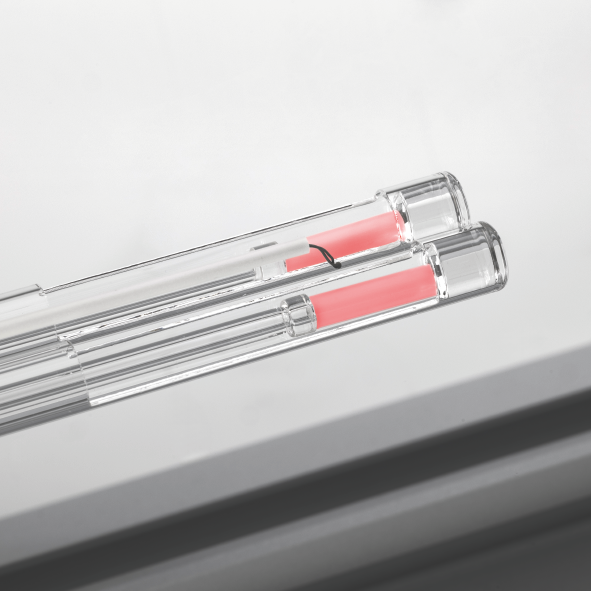


Measurement possible

Measurement possibly possible

Measurement not possible
| Gerät | Thermischer Ausdehnungs-koeffizient (CTE) | Definierte Atmosphären | Hochtemperaturbereich | Mehrfachmessung | Deformation / Quenching | Kontaktfreie Messung (Sintern) | Kalkulierte DTA | Relative Dichte (Dichte- bestimmung) |
|---|---|---|---|---|---|---|---|---|
| DIL L75 Horizontal | ||||||||
| DIL L75 Vertikal |  | |||||||
| DIL L76 Horizontal |  |
|||||||
| DIL L74 HM |  |  | ||||||
| DIL L74 OD |  |  |
||||||
| DIL L78 |  |  |
||||||
| DIL L70 HP |  | |||||||
| DIL L75 Quattro |  |  |
Extensions

To maximize the performance of the dilatometers, various add-ons and expansion modules are available. add-ons and extension modules are available. They make it possible to adapt the measuring system to specific applications, materials or process conditions.
Through additional gas controls defined atmospheres such as air, vacuum or inert gas can be precisely set – ideal for oxidation-sensitive or reactive samples.
Force sensors and load units extend the measurement to include thermomechanical parameters such as pressure or deformation behavior.
With optical or laser-based extensions can be used to record changes in length without contact and with high resolution.
Additional add-ons such as automatic sample changers, safety and calibration devices or software modules for data analysis increase the efficiency, safety and reproducibility of measurements.
This means that Linseis dilatometers can be individually configured – for maximum flexibility in research, development and quality assurance.
Are you interested in a dilatometer measuring device?
Would you like to carry out a
sample measurement?
Contact us today!

Your benefits - Unique features of Linseis dilatometers
Linseis has been setting standards in dilatometry for decades.
Our systems combine maximum precision, modular flexibility and technical innovation – for reliable results in research, development and quality assurance.
1. Zero friction vertical dilatometer
The vertical design with frictionless sample mounting (“zero friction design”) ensures maximum measuring accuracy – even at temperatures of up to 2800 °C.
The measuring system remains thermally stable, outgassing is optimally dissipated and the results are reproducible over the long term.
2. multi-furnace and quattro system
With up to three combinable furnaces and four simultaneously measurable samples, Linseis dilatometers offer maximum flexibility and productivity.
This unique combination increases throughput many times over – ideal for series measurements, material comparisons or process optimization.
3. hybrid measuring systems and Michelson interferometers
Whether classic push rod dilatometry or high-resolution laser technology – Linseis covers all measuring principles.
The combination of LVDT and optical encoder technology enables absolute, low-maintenance measurements without reference material – a unique selling point on the market.
Why Linseis - The difference in dilatometry

Long-term Investment with added value
At Linseis, the focus is not only on precision, but also on sustainable added value over the entire life cycle.
Our systems offer the lowest operating costs in their class – thanks to durable, low-maintenance components, robust design and intelligent software maintenance.
Fewer service calls, shorter downtimes and continuous remote updates ensure maximum system availability and future-proofing – for decades to come.

Customized Solutions – flexibility as standard
Every measuring task is unique – that’s why Linseis does not manufacture standard devices, but tailor-made systems, precisely tailored to your application.
Whether special furnace, special sensor technology, extended temperature range or customer-specific software integration – our experienced engineering team develops solutions that perfectly match your requirements.
With our modular product architecture, individualization becomes standard – fast, precise and reliable.

Technological pioneers and innovative strength since 1957
Linseis has been a technological pioneer in thermal analysis for over six decades.
With the highest in-house production rate in the industry and an excellent R&D department, systems are created that set new standards in precision, stability and adaptability.
From the mechanical structure to the electronics to the software, every core system element is developed in-house – for technologically perfect and uncompromisingly precise measurement technology “Made in Germany”.

Software expertise at the highest level
With the new LiEAP software suite, Linseis is redefining the standard in thermal analysis.
Modular in design, intuitive to use and equipped with state-of-the-art evaluation and remote functions, it ensures maximum efficiency, transparency and control at every step of the process.
Areas of application of dilatometry
Frequently asked questions about dilatometry
What is the difference between a dilatometer and a TMA?
A dilatometer measures the absolute dimensional changes (ΔL) of a sample as a function of temperature or time, typically under minimal mechanical load.
A thermomechanical analyzer (TMA), on the other hand, exerts a defined force on the sample and records its deformation. In addition to thermally induced changes in length, effects from viscoelastic or plastic behavior are also recorded.
Dilatometry is therefore ideal for investigations into thermal expansion, shrinkage and sintering behavior, while TMA concentrates on mechanical deformation under load.
In addition to classic pressure and penetration measurements, the TMA can also work under tension. This method allows the precise analysis of materials that expand when heated or subjected to mechanical stress. This allows elasticity, creep behavior and thermal expansion to be investigated under realistic conditions – ideal for polymers, films and composite materials.
What are the advantages and disadvantages of vertical and horizontal dilatometers?
Both designs have their specific advantages and are selected depending on the application.
Horizontal dilatometers impress with their simple, robust design, homogeneous temperature distribution in the sample chamber and convenient sample handling. They are particularly suitable for standard applications in the medium temperature range and are considered a cost-effective solution for routine analyses.
Vertical dilatometers, on the other hand, offer maximum precision and measurement stability, especially at high temperatures. The so-called zero-friction design (the specimen is only in contact with the end stop and push rod) eliminates mechanical influences and friction losses, which leads to particularly reproducible results. In addition, heat rises to the top, which keeps the measuring system thermally stable. Another advantage can be seen in sintering studies: in vertical alignment, the sample is much less likely to adhere to the sample holder, which enables precise and interference-free measurements.
Vertical systems also allow the use of several ovens (e.g. low-temperature and high-temperature ovens) and thus cover an extended temperature range of up to 2800 °C.
Overall, horizontal systems are ideal for routine and standard measurements, while vertical dilatometers show their strengths when it comes to maximum precision, extreme temperatures and complex applications.
What are the advantages of the DIL L75 laser (DIL L73 laser) compared to conventional systems?
The DIL L75 Laser (DIL L73 Laser) uses laser interferometry to measure absolute changes in length without the application of force.
This avoids errors due to friction, hysteresis or drift, enabling sub-nanometer resolution (down to 0.3 nm) and excellent reproducibility – even with reflective or sensitive samples.
What is the difference between a laser dilatometer and one with an optical encoder?
The optical encoder serves as a detection method on the push rod and measures the relative displacement using reflected light and mechanical contact. This technique enables precise measurement of the change in length between the sample and the reference, based on the movement of the push rod.
A laser dilatometer, on the other hand, determines the absolute expansion directly from the interference phase shift of coherent laser beams. This ensures maximum accuracy, no mechanical wear and no need for calibration standards.
What are the most important requirements for sample preparation?
The samples should have a smooth, parallel surface and clearly defined dimensions in order to achieve reproducible results.
The DIL L75 laser (DIL L73 laser), for example, enables flexible geometries with a length of up to 50 mm and a diameter of up to 7 mm. Thanks to the non-contact laser principle, even reflective or non-reflective surfaces can be analyzed without modifications.
What types of detectors are used to measure changes in length in dilatometers?
Conventional systems use LVDT sensors (Linear Variable Differential Transformer) or optical encoder sensors.
Optical dilatometers also have an integrated camera that visually records the sample movement and thus enables precise control and documentation of the measurement process.
Laser dilatometers, on the other hand, use interferometric detectors that measure phase shifts in light with the highest precision and thus achieve a much higher resolution than mechanical sensors.
What are the advantages and disadvantages of the different detectors (LVDT and optical encoder)?
In dilatometry, two measuring systems are used to record the change in length: LVDT sensors and optical encoders.
LVDT sensors (Linear Variable Differential Transformer) are robust, precise and low-maintenance. They deliver a very high resolution and are insensitive to dust, vibrations or temperature fluctuations. This makes them particularly suitable for long-term and high-temperature measurements where mechanical stability is crucial.
Optical encoders record the absolute position of the sample using a light-based measuring system. This allows the initial length (L₀) to be determined directly when the sample is inserted – without separate measurement. They also offer a larger measuring range, which is particularly advantageous for sintering processes with high shrinkage. However, they are more sensitive to soiling and occasionally require calibration.
Linseis combines both technologies in a hybrid system on request – and thus unites the precision and robustness of the LVDT with the flexibility and absolute measurement of the optical encoder. This means that the advantages of both systems can be optimally utilized.
For which applications are quenching dilatometers required?
Quenchingdilatometers are used to investigate the thermomechanical behavior of steels (metals and alloys) during real heat treatment processes.
They make it possible to precisely simulate heating, holding and quenching processes and to measure the change in length of the sample as a function of temperature and time.
Typical applications include the determination of transformation temperatures, the analysis of phase transformations (e.g. austenite-martensite) and the optimization of heat treatment parameters in steel and material development.
This allows hardening, tempering temperatures and cooling rates to be specifically adjusted to achieve the desired microstructures and mechanical properties.
Quenching dilatometers are therefore particularly important for research, quality control and process optimization in metallurgy, aerospace, the automotive industry and wherever the thermal behaviour of metallic materials is crucial.
What is the difference between a single and a double dilatometer?
The difference between a single and a double dilatometer lies in the measuring principle and the way in which environmental influences are compensated.
Ein Single-Dilatometer misst die absolute Längenänderung einer einzelnen Probe in Abhängigkeit von Temperatur und Zeit. It is the classic and most frequently used design and is ideal for standard measurements and routine applications.
A double dilatometer (also known as a differential dilatometer) works with two samples that are measured in parallel in the same furnace – a reference sample and a measurement sample.
This allows systematic influences, such as furnace drift or thermal expansion of the setup, to be directly compensated for. This leads to greater precision and reproducibility, especially for long-term measurements or very small changes in length.
To summarize:
Single dilatometer → simple, robust solution for standard analyses.
Double dilatometer → more precise, drift-compensated measurement thanks to parallel reference guidance – ideal for demanding research and comparison measurements.
Quicklinks
Reach your goal quickly
Well informed
Downloads
Everything at a glance
Contact form
How new materials have been steadily improving our quality of life
for centuries.
Use the quotation form to send us a specific request for a quotation.
